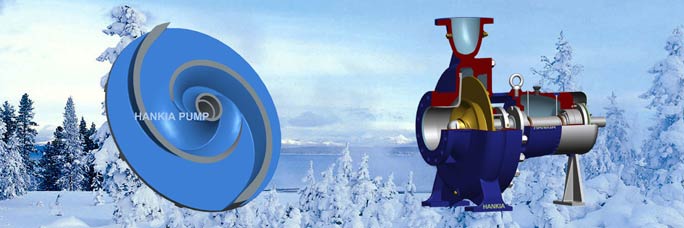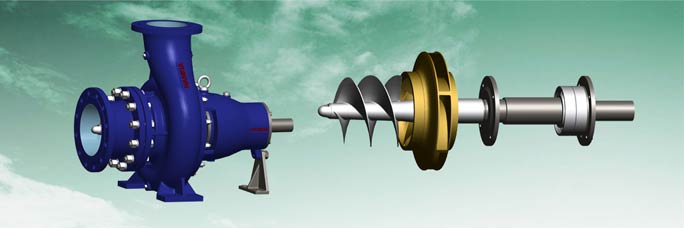Pump technology
- Pump viscosity correction
- Impeller cuts
- How to change the pump performance
- Centrifugal pump introduction
- Cavitation
- Right impeller selection
- Pump installation
- Vertical turbine pump
- Tops for specifying pumps
- Determine between end suction pump and double suction pump
- Understanding the NPSH
- Axially split case pump
Pump category
How to change the pump performance
But what of existing installations in which the pump or pumps are over-sized and have excessive margins? Is it too late to achieve these savings? Far from it! As a matter of fact, it is possible to establish the true system-head curve even more accurately by running a performance test once the pump has been installed and operated. Once a reasonable margin has been selected, four choices become available:
1. The existing impeller can be cut down to meet the real service conditions required for the installation
2. A replacement impeller with the necessary reduced diameter may be ordered from the pump manufacturer. The original impeller is then stored for future use if friction losses are ultimately increased with time or if greater capacities are ever required.
3. If two separate impeller designs are available for the same pump, one with a narrower width, as is sometimes the case, a replacement may be ordered from the pump manufacturer. Such a narrow impeller will have its best efficiency at a lower capacity than the normal width impeller, depending on the degree to which excessive margin had originally been provided. Again, the original impeller is put away for possible future use.
4. Replace the control valve with a VFD.
In addition to over-sized pumps which result from excessive margin, different industries with many different processes will have requirements for the same pump to operate at different capacities, different heads, and to have a different shape of the head-capacity curves. To ideally satisfy these requirements, one should have a variable speed pump with adjustable vanes in the impellers. But because most of the drivers in the process industries operate at constant speed, and the adjustable vanes cannot be produced economically, variable pump performance must be achieved by mechanical means without sacrificing efficiency.
In order to provide this flexibility at minimum cost, studies were made to change pump performance within a given pump casing. This can be accomplished by varying the impeller design, by impeller cuts, by changing the running speed, by modifying the impeller vane tips, by filing the volute cutwater lip, or by installing an orifice in the pump discharge.
Pump users would prefer to use the same casing for a wide variation of pump performance. The pump casing is usually the most costly part of the pump. To replace a pump casing means extensive and costly work on baseplate and piping.
The prediction of pump performance by modifying parts other than the casing is largely based on experimentation. Many tests have been conducted by the various pump companies in such areas as:
1. Trimming the pump impellers
2. Removing metal from the tips of impeller vanes at the impeller periphery
3. Removing metal from the volute tip in the pump casing
4. Providing impellers of the same angularity, but different width
5. Providing impellers with different number of vanes and different vane discharge angles
6. Installing an orifice in the pump discharge casing near the nozzle.
Hankia pump has qualified testing system the verify the pump after the newly design and modification to the standard design. Hankia know its pumps very well and have ample testing database to made right technical prediction of the pump performance. If you have a pump already on your site and do not wish to replace news, you can do some change on the current according to our suggestions.





